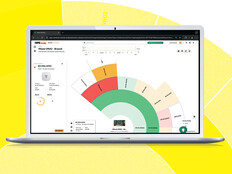Internet access is important because most customers come onsite to sign rental agreements, and a good percentage still walk in to pay by credit card, a transaction processed over the internet, O’Donnell says.
Life Storage began transitioning to Cradlepoint routers more than two years ago because the all-in-one devices provide a firewall, intrusion detection and prevention, a secure VPN connection to the company’s data center, and a built-in modem that provides 4G LTE wireless broadband connectivity.
“We subscribe to whatever reasonably priced high-speed internet connection we can get at each facility, which is mostly cable but sometimes fiber. And we use 4G LTE as backup for failover needs,” O’Donnell says.
The company installs Cradlepoint AER2200 routers at new locations or as older firewall devices reach the end of life. So far, about half the facilities have switched over.
The devices, which are easy to install and are placed between the cable modem and PCs at each self-storage location, provide an affordable backup internet solution. Instead of paying full price for two separate internet connections, the company pays a minimal fee to Verizon Wireless to keep each router’s SIM card active and is charged only when it uses the cellular service, O’Donnell says.
Life Storage’s IT department centrally configures and manages each router through Cradlepoint’s cloud-based management software. When the main internet connection goes down, the devices automatically fail over to the cellular connection. “When we fail over to LTE, stores very often won’t notice a difference. It runs like it’s their primary connection,” O’Donnell says.
In fact, for some locations where regular web access is unavailable, LTE is the primary connection. Overall, the backup connection provides peace of mind. “Outages don’t happen often, but when it’s needed, it’s well worth it to keep the stores running like business as usual,” he says.
AbelsonTaylor Keeps Eyes on the Network with Monitoring Tech
AbelsonTaylor, a Chicago-based health and wellness advertising agency, uses SolarWinds tools to monitor the health of its network and data center infrastructure. When it detects network outages and performance issues, it alerts the IT staff over email so they can quickly troubleshoot, says Jason Dave, the company’s senior network administrator.
“It gives us close to a 360-degree view,” Dave says. “When something goes down, we get alerted, so we can fix it immediately.”
For example, if employees complain that file server access is slow, he can check SolarWinds to determine what’s at fault: a server, software or the network. And if users can’t access the internet, he can use SolarWinds to determine whether it’s the company’s network or its ISP that has the outage.
“If it’s on my side, it could be a bad transceiver or software bug on our router. But if the ISP is down, then while I wait for them to fix it, I need to make sure our secondary ISP is our new active path,” Dave says.
AbelsonTaylor built in network redundancy throughout its office. The IT department has deployed two Cisco ASR edge routers, two Cisco Nexus 5600 Series switches at the network core and two Fortinet next-generation firewalls for redundancy. If one device goes down, the other keeps the network running.
What’s more, the Cisco Catalyst 3850 Series switches in the network closets have redundant uplinks to the network core. Dave also has cold spares on hand, so if an edge switch fails, he can configure a spare and have it running within an hour. The 20 to 40 people impacted can connect to the company’s Wi-Fi on their laptops to continue working in the meantime, he says.
“We make sure there’s no single hardware failure that can cause a major service disruption,” he says. “At the end of the day, hardware can fail at any second, and when it does, you need to know about it — and that’s what SolarWinds does.”
Clair Global Keeps Networks Up, Even on Tour
Concert production company Clair Global can’t afford any network downtime when it provides IT infrastructure and communications for large music events such as Coachella. The Lititz, Pa.-based company specializes in audio systems, but in recent years, it has expanded its services to offer IT deployments for festivals and concert tours.











